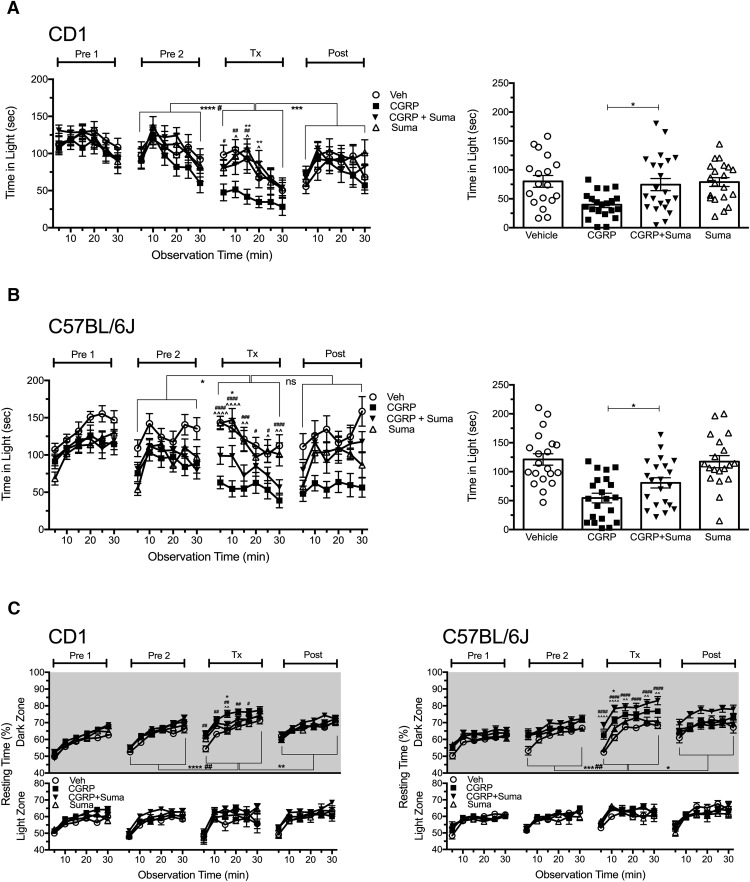Figure 5.
Sumatriptan attenuates light aversion induced by peripheral CGRP. A, Time spent in light zone by CD1 mice at 2.7 × 104 lux (left). Mice were injected intraperitoneally with vehicle (Veh, n = 19), CGRP (0.1 mg/kg, n = 22), sumatriptan (Suma, 0.6 mg/kg, n = 19), or CGRP plus sumatriptan (CGRP+Suma, 0.1 mg/kg CGRP, 0.6 mg/kg Suma, n = 23). Data are from two independent experiments. Right panel shows the mean time (±SEM) in light per 5 min interval for individual mice on treatment day. B, Time spent in light zone by C57BL/6J mice at 2.7 × 104 lux (left). Mice were injected intraperitoneally with vehicle (n = 20), CGRP (0.1 mg/kg, n = 21), Suma (0.6 mg/kg, n = 19), or CGRP+Suma (0.1 mg/kg CGRP, 0.6 mg/kg sumatriptan, n = 21). Data are from two independent experiments, although the postexposure is from only one experiment. Right panel shows the mean time (±SEM) in light per 5 min interval for individual mice on treatment day. For both A and B, mean ± SEM is shown, with significance indicated for CGRP compared with vehicle as #p < 0.05, ##p<0.01, ###p < 0.001, ####p < 0.0001; CGRP compared with Suma as ∧p < 0.05, ∧∧p < 0.01, ∧∧∧∧p < 0.0001; CGRP compared with CGRP+Suma as *p < 0.05, **p < 0.01. Time spent in the light between treatment days with significance is indicated for CGRP (*) and CGRP+Suma (#). C, Resting time was measured concurrently with light aversion for the same mice in A and B. CGRP-treated mice spent significantly more time (mean ± SEM) resting in the dark compared with mice treated with vehicle, Suma, or CGRP+Suma, with significance indicated as described for A and B.

